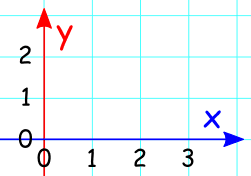Numbers that has both real and imaginary parts are called complex numbers.It can be written as a + bi where a and b are real numbers and i is the standard imaginary unit.The standard
imaginary number has the property i^2 = -1.
Complex numbers are useful abstract quantities that can be used in calculations and result in physically meaningful solutions.Unlike real numbers, complex numbers do not have a natural ordering, so there is no analog of complex-valued inequalities.
To assemble a complex number, a second number is associated with each real number.
A complex cardinal is again an ordered pair of absolute numbers (a,b).
We address that fresh cardinal as
a + bi
The '+' and the i are just symbols for now.
We call 'a' the absolute part and 'bi' the abstract part of the complex number.
Ex :
(2 , 4.6) or 2 + 4.6i ;
(0 , 5) or 0 + 5i ;
(-5 , 36/7) or -5 + (36/7)i
Instead of 0 + bi, we address 5i.
Instead of a + 0i, we address a.
Instead of 0 + 1i, we address i.
The set of all complex numbers is C.
Next time we will learn how to solve complex
numbers problem like sum, product, multiplication, etc.

